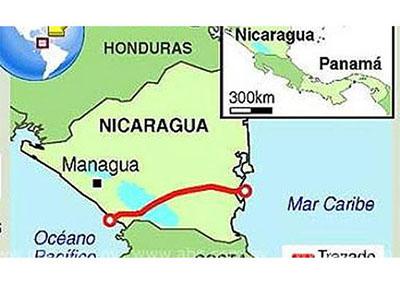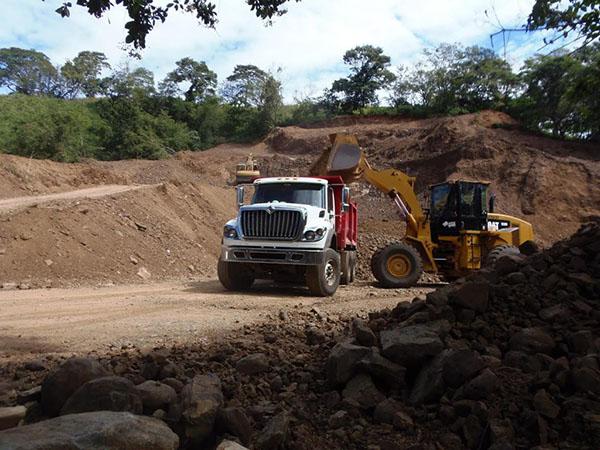
A distance of 2,610 kilometers separates the isthmus of Tehuantepec in Mexico from the Atrato River in Colombia, which forms a natural eastern border with Central America.
There are various areas - between seven and 19 according to different experts – in this region with the potential to construct a canal connecting the Atlantic and Pacific Oceans. Although the 64 kilometer Darién stretch represents the narrowest course, numerous other studies to find a feasible route between the two largest bodies of water on the planet have been carried out over the years.
It wasn’t until the mid 19th century, however, that the possibility of building a canal became a viable prospect.
The first industrial revolution had already taken place and the second was at its peak. Success seemed assured, given advances in engineering, hydraulics and the invention of the necessary machines to build a canal.
Another mega project, the Suez Canal, was inaugurated that century, in 1869, connecting the Mediterranean with the Red Sea, and thus solving the problem of circumventing the vast continent of Africa.
In 1811, Alejandro de Humboldt conducted the first serious study on the prospect of building a canal in the region, identifying the route through Nicaragua as the easiest to construct. Despite never having visited the region, the astute German arrived at this conclusion by studying maps, documents and books. Humboldt himself warned that his calculations were not based on land tests and that experts would need to investigate every possible route, before launching such a colossal project. Previously, in 1804, the young Humboldt had visited the United States, where he was received by President Thomas Jefferson to whom he transmitted his enthusiasm for the possibility of building an inter-oceanic canal.
Some historians claim that it was these conversations which sparked U.S. interest in the mega project - interests that were in no way altruistic, nor coincided with the universal idea of mutual benefit. At that time the U.S. had its sights set on the South. Looking to acquire Spain’s possessions, it followed the progress of the independence struggles being fought in the region by anti-colonial patriots through a leans of economic and commercial gain, with a special focus on control of Cuba and the Caribbean Sea.

The U.S. began to actively formulate plans to turn the region into what would later come to be known as its “backyard,” with an inter-oceanic canal constituting a key feature of these schemes.
It wasn’t just the U.S. that had plans to build a canal. In 1815, the boundless vision of Liberator Simón Bolívar was articulated in his “Letter to Jamaica” in which he noted, “The isthmus of states from Panama to Guatemala could potentially form an association. This magnificent location between the two great oceans could in time become the emporium of the world. Its canals will shorten distances throughout the world; strengthen commercial ties with Europe, America and Asia; and bring that happy region tribute from the four corners of the globe…”
It is worth highlighting a few key aspects of Bolívar’s idea. First, that despite the fact that at that time Panama was part of Colombia, whose status as a Republic was established during the Congress of Angostura, the Liberator envisioned a Central American association which would include Panama.
Likewise, it is also worth noting that by this time, Bolivar was already talking about “canals,” a concrete example of how he understood that several of these waterways would need to be constructed. Also significant is his belief in the universal benefits that the canals could provide as “emporiums of the world,” in contrast to what was to happen later when the U.S. occupied the section of the territory for over a century, in order to build the Panama Canal and thus cement its unilateral objectives.
More than a century later, on March 20, 1929, General of Free Men, Augusto Cesar Sandino described in a letter to Argentine President Hipólito Irigoyen his “Plan to realize Bolívar’s ultimate dream,” a project that his National Sovereignty of Nicaragua Defense Army would present to representatives of the governments of the 21 Latin American States. This document reveals General Sandino’s vision of Latin American unity, in which he highlights the need to construct a canal in Nicaragua given that it “…represents mutual benefit for the 21 Latin American States…” In the letter Sandino also warns, “The first error has been committed in our Indo-Latin America, after she failed to be consulted in regards to the opening of the Panama Canal; but we can still avoid making another mistake with the Nicaragua Canal.”
There, among many aspects, he laid out the aim of his proposal.
Almost another century would have to pass before a Nicaraguan government, inspired by Sandino’s ideas, would revive the scheme to construct a new canal in Central America to compliment the waterway which has existed in Panama since 1914.
Unlike the construction of the Panama Canal which saw direct U.S. military intervention and the implementation of a series of shady mafia-like practices and policies to take over the section of territory under Colombian sovereign control, work on the Nicaragua Canal began after the Sandinista National Liberation Front (FSLN) toppled the despicable Somozadictatorship backed by the U.S. and established a democratic government, which was subjected to a brutal war organized, armed and financed by the very same Northern power.
However, the Nicaraguan people knew how to protect their war-won democracy, rescuing it from neoliberal practices, to once again set out on the path toward peace and progress, creating the appropriate conditions in which to launch the mega-project.
The construction of the canal would not have been possible under a dictatorship, nor under the conditions imposed by neoliberal governments, and now that the dream has become a reality, the project faces new threats form the same enemies, only this time in different guises.
Article 2 of Law 800 created to regulate the legal framework of the Grand Nicaraguan Inter-Oceanic Canal states that the waterway “constitutes heritage of the Nicaraguan nation and given its natural form will include guarantees of complete neutrality and international public service, whose functioning must not be interrupted under any circumstance.”
Likewise, article 29 of the law explicitly declares, “The Grand Nicaraguan Canal and the surrounding lands essential to its operation will be declared the property of the Nicaraguan state.” Sandino’s concerns did not fall on deaf ears when regulations to govern the construction and functioning of the canal were considered.
In this sense, President of Nicaragua, Daniel Ortega, sent a message to all the communities in the areas along the Canal route, assuring them that no one would be trampled over, or affected, as opposition groups supported by the U.S. would have people believe, according to comments by Russian analyst Nil Nikándrov in the online magazine Fundación de Cultura Estratégica. On the contrary, Comandante Ortega has stated that these communities will benefit from the project.
The environmental issue has also been used as a weapon by anti-government sectors to try and confused inhabitants who live near the canal route, however, British company Environmental Resources Management (ERM), one of the world’s most prestigious firms in the field, which was contracted by Chinese concessionary HKND Group to carry out an environmental and social impact study on the project, presented its report on May 29, 2015.
On the basis of the study, the Nicaraguan government and Grand Canal Commission reviewed the environmental mitigation recommendations, which even included a redesign of the original project.
In regards to those attempting to foment a clash of interests between Nicaragua and Panama, President Ortega made it clear that “The Grand Nicaraguan Inter-Oceanic Canal will be a reality and work to compliment the Panama Canal, given the increase in the demand for goods on the international market.”
Panama opened the way for Central America to become an “emporium of the world” just as Bolívar dreamed. General Torrijos rescued it for his people. Now, Nicaragua is looking to move forward along this path.
As always, small minds and foreign interests will try to stop the process. The route, aptly named the “Grand Augusto C. Sandino Inter-Oceanic Canal” will make a vital contribution to the path toward peace and unity among the peoples of the world (Excerpts from Barómetro Internacional)








